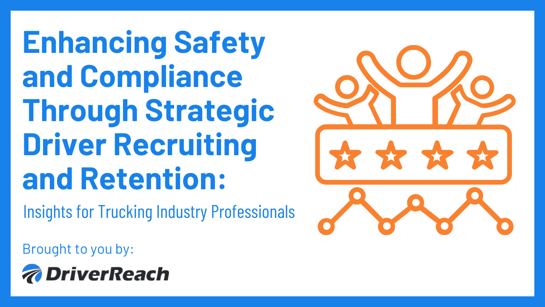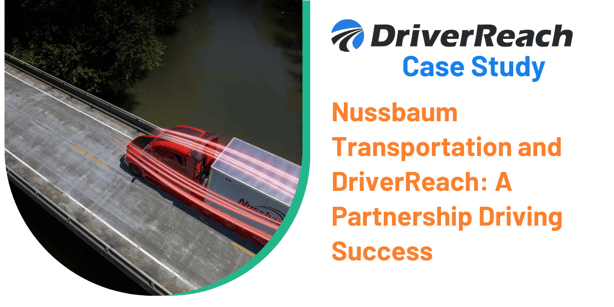Did you have a chance to attend webinar, “How to Communicate with Drivers Amidst COVID-19 Confusion”? We received more questions than we had time to answer in the allotted time frame, so our presenter from WorkHound, Max Farrell, has answered them below in this Q&A-style blog post. If you weren’t able to join the live webinar, don’t worry – you can watch it on-demand anytime!
Question: What’s the trend that everyone is seeing for day to day communication from drivers to companies to repair facilities? The majority of ours is all over email or some form of electronic tooling.
Answer: You can’t communicate too much during this time. We have companies sending out messages to a driver’s mobile phone via WorkHound so they can give quick, timely updates from the company via text message. Some are sending out emails and starting a driver-only Facebook page to communicate COVID-19 information as it changes. Don’t sit on communications – get them out quickly.
Question: How many drivers’ responses were included in the percentages given?
Answer: 1,954 comments were analyzed starting with the first comment in Mid-February through March 23, 2020. The WorkHound team is currently continuing to analyze feedback and will release an update within the next week.
Question: Where can we get the ebook?
Answer: Check out the ebook here on WorkHound.com: https://workhound.com/wp-content/uploads/2020/03/An-Analysis-of-Driver-Feedback-about-COVID-19-1.pdf
Question: If we utilize WorkHound in the future, is there a way to respond to the comments?
Answer: For WorkHound messages, drivers share their feedback and it's populated anonymously on a dashboard that the company can see. We will soon be offering a resource for companies to self-service message responses to drivers, but for now, companies can communicate anonymously with the drivers via their Customer Success Manager.
It’s also possible to ask the driver to reveal their identity to have a direct conversation. This is especially helpful when drivers share urgent comments and their company just wants to help.
Question: How do you recommend communicating with a driver who is refusing to work due to the virus? Outline expectations after sick time? Can there be expectations on a driver?
Answer: This is uncharted territory. But everyone is in this together and experiencing it in real-time, and if you haven’t experienced this yet, it’s important to have a game-plan in place for when you do. The answer about time-off requests all depends on what your company can tolerate right now.
The ugly truth is that you have to keep the business moving, but you have to keep in mind that people are going to remember how your company handles all of this once it’s over. If your drivers are forced into quarantine, consider giving them sick leave, but it’s tough in this business to give extensive time off with pay. If you can afford it, that’s awesome, but you have to figure out what’s best for your business.
Be upfront about what your business can handle and be explicit about why.
Question: How can we help show empathy for the drivers while explaining all of the requirements at the consignees or shippers now taking temps, etc before loading and/or unloading?
Answer: First listen to understand, rather than to respond. Listen to what their concerns are rather than assume. Be mindful of your tone; tone is hard with written communication. We all know tone can get lost in text. In these times, communication has to be about expectation-setting and de-escalating stressors.
It’s about saying: “We understand that people are staying home because COVID-19 is real and spreading quickly, but drivers can’t stay home, and here are the things we have to do to stay healthy and what we get to do to keep our country moving.”
When challenging, seemingly one-sided things happen to drivers, like taking temperatures or office staff working from home, we have to communicate these actions as good things because it’s not about targeting truck drivers, it’s about doing good for all of society.
And most of all, their work should be applauded. It’s not easy to think about right now with all of the chaos happening, but get with your teams and consider ways to take care of your drivers and make them feel appreciated, because they’re doing work that only a few can do in our world.
Question: Do you see any long-term shifts in the way drivers will want to be communicated post-COVID? has this virus changed the way our industry will approach working with drivers?
Answer: I’m always trying to think through how we find the positive in all of this because it’s easy to get stuck with thinking about the negative. And one thing that’s helping is the appreciation that’s being shown to our truck drivers in their work to keep the country moving. I think there’s going to be a lot of gratitude in the future about the importance of drivers in every industry.
But most of all, this time is showing now that we must over-communicate and be proactive. Just sticking a note on the bulletin board and waiting for a driver to come back after being gone for a week and then hoping they’ll get the message is not sufficient.
The truth is that right now we might not be at the office when drivers walk through the door, so digital communication is critically important in getting the message out when it’s needed.
Question: What is the best way to explain that DOT randoms still must be completed or it's a refusal.
Answer: The DOT has released several updates regarding limiting random testing. FMCSA has suggested that randoms are not a requirement and that once COVID-19 passes, it’s okay to return to your regular operating schedule, but right now, that’s not the priority.
The fact is: We are in a new normal and what mattered a month ago doesn’t matter now. What we have to think about now is keeping our country moving and stopping the spread.
So think of it this way: Random drug testing forces two people to be present together within close quarters, but we’ve been directed by the CDC to keep our distance. Many drivers are considered high-risk for COVID-19 because of pre-existing conditions. Be considerate of their health.
However, there are outliers. It’s a completely different story when it comes to someone displaying concerning behavior while driving. But if that isn’t a concern, for now, the priority should be stopping the spread and keeping things moving.
Question: Is there any traction for allowing a driver to carry a fire-arm on their unit?
Answer: Companies are going to have to make that decision on a company basis and be conscious about the drivers’ locations. For example, a state in the Northeast will likely be a lot more stern about whether or not a driver can keep a firearm in their vehicle than a state in the Southeast. There are a lot of variables to consider and it has to be on the company to make that call if there’s data to support the need.
Stay up to date on CDL trucking trends! Be sure to check out the DriverReach blog or follow us on LinkedIn for other relevant articles and head over to our webinars page for an up-to-date list of upcoming events and on-demand recordings.
Interested in seeing DriverReach’s modern Recruiting Management System in action? Request a demo!






